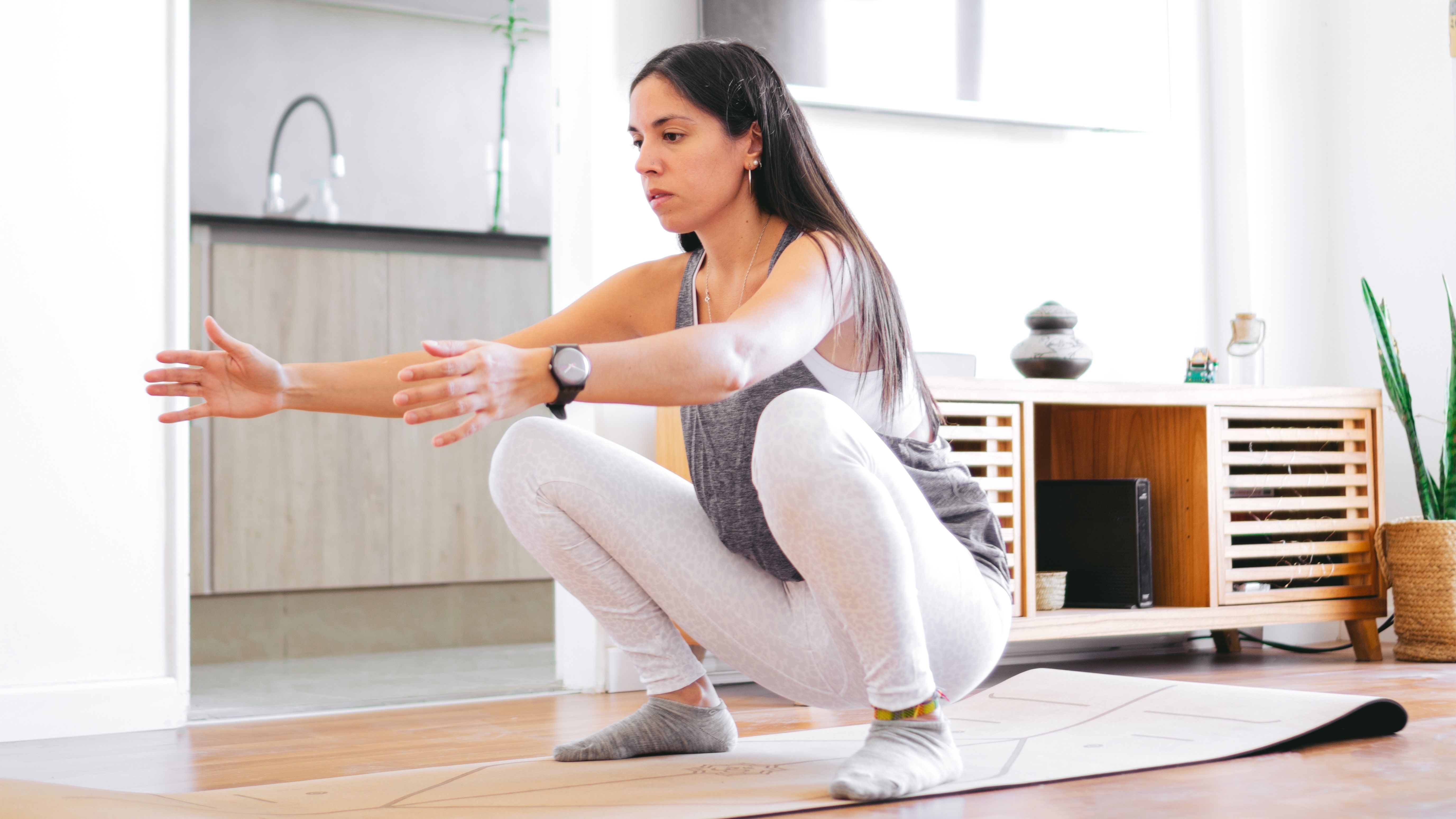
When it comes to working your thighs and glutes, you might have been focusing on regular bodyweight squats, but there’s a new variation worth trying — the frog squat. The frog squat not only targets most of the major muscle groups in your legs, but can help increase your strength and improve your depth and performance in weighted squats.
The exercise requires little space and no equipment, but how do you do frog squats, and what happens if you do 50 a day for a week? To find out more, I added them to my daily workout routine — read on to find out what happened.
As a reminder, if you’re new to exercise, or returning to exercise following an injury or pregnancy, it’s a good idea to check with a personal trainer before adding a new exercise to your routine. Always ask a personal trainer to check your form to ensure you’re not moving in a way that might cause injury.
How to do a frog squat
Let's start with how to do a frog squat with perfect form:
- Start by getting into a squat stance, with your feet slightly wider than hip-width apart and your toes pointing out to the side — your feet should be pointed out more in a frog squat than they would be in a sumo squat.
- Push your hips back and bend at the knees into a squat.
- Clasp your hands together in front of your chest, and push through your heels to hinge your hips and drive your glutes upwards. Keep your back straight, and your knees bent as you do this.
- Be mindful not to extend up too far.
- Lower back to your starting position, keeping your core engaged to stabilize your body.
- That’s one rep.
The main thing to remember when completing a frog squat is to keep your spine neutral to avoid arching your back — this limits the muscle activation in the lower body, and can mean you have poor form in your barbell squats. You should also be careful not to fully extend your knees at the top of the movement.
I did 50 frog squats every day for a week — here’s what happened
To find out more about the benefits of frog squats, I added them to my routine for a week, completing 50 reps per day. Here’s what I learned, and why I’d recommend this as your next squat challenge:
It worked my lower body hard
I already knew that the frog squat would target my glutes, quads, hamstrings, and core, but I was surprised by how hard this simple bodyweight move worked on my lower body, especially compared to bodyweight squats. This is largely down to the increased time the muscles in the legs spend under tension in this move, as you’re not raising back to a standing position. At the beginning of the week, I only managed about ten reps before having to stand and shake my legs out, but as the week progressed, I was able to increase this number.
The main muscle worked in this exercise is the glutes, which is important to me as a marathon runner. The glutes are the largest muscle in the body but are often lazy when performing exercises, especially if you spend a lot of time sitting down (like I do). I’ll definitely be incorporating frog squats into my warm-up in the future to get my glutes firing before heading out for a run.
My core had to fire up too
I didn’t expect my core to work hard during the frog squat, but I really had to think about sucking my belly button into my spine during the exercise to stabilize my torso as I moved my hips.
This kind of functional strength exercise is important for everyone, whether you’re weightlifting or training for your next triathlon. A strong core can help reduce your risk of lower back injury, improve your posture, and help you move with good form — from carrying heavy bags of shopping, to lifting heavy items down from shelves.
It’s suitable for beginners
Despite sounding complicated, this is a great exercise to add to your routine if you’re a complete beginner, or looking to progress into weight training, as it really helps you work on your form. I also enjoyed that I didn’t need to heavy my best adjustable dumbbells out from behind the couch for this one!
That said, the frog squat can easily be progressed by adding weight to the move. To do this, hold a dumbbell or kettlebell with both hands, keeping it close to your chest as you perform the frog squat. This has the added benefit of engaging your arms, shoulders, and back as you move.
I did 50 frog squats every day for a week — here’s my verdict
I really enjoyed this exercise, and challenge, and found it gave my tight hip flexors a good stretch, and forced the smaller stabilizer muscles in my hips to work harder than they typically would in a bodyweight squat.
I’d definitely recommend adding frog squats to your leg routine, whether as a warm-up, or as part of your strength training, as after a week I found I was able to master the move with better form, and felt like I’d worked my lower body hard. Next up, weighted frog squats!







